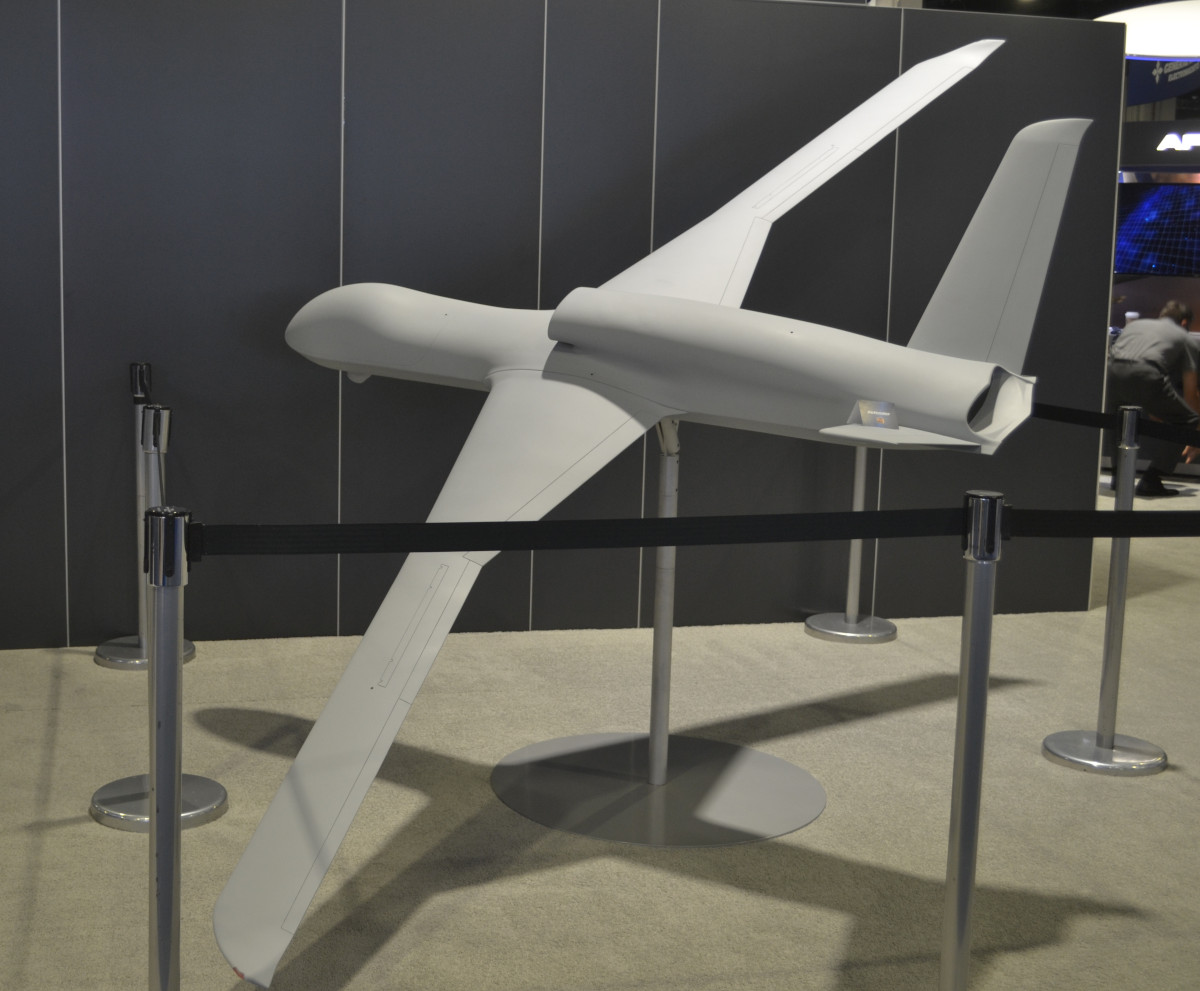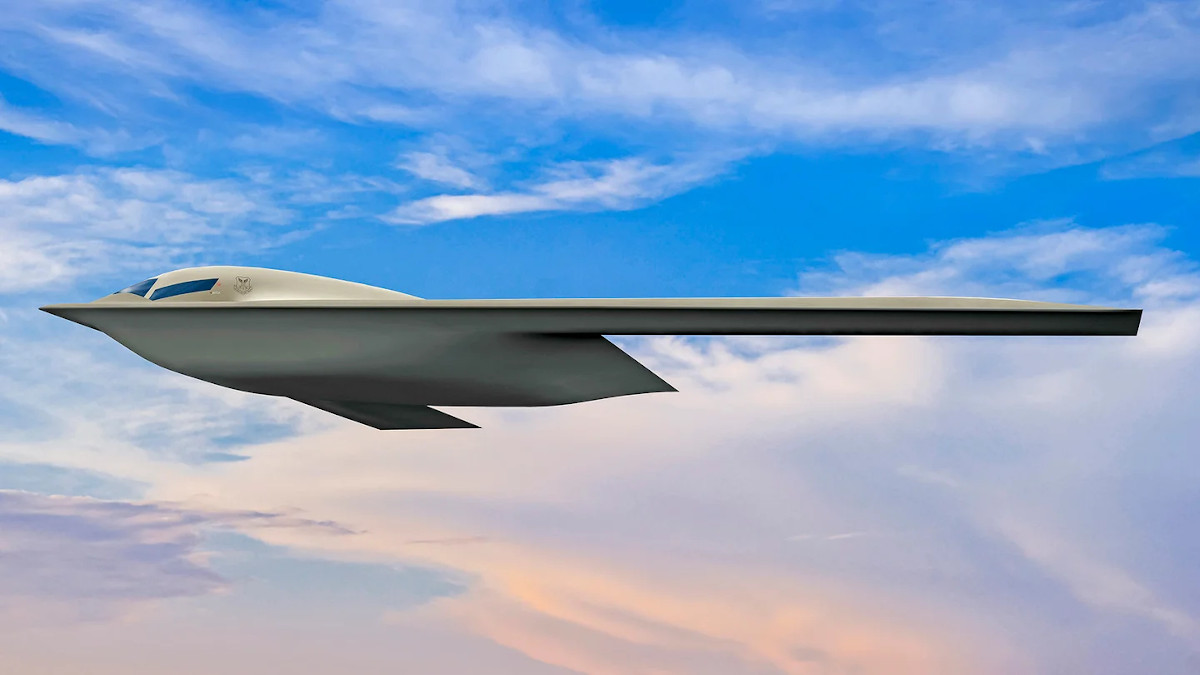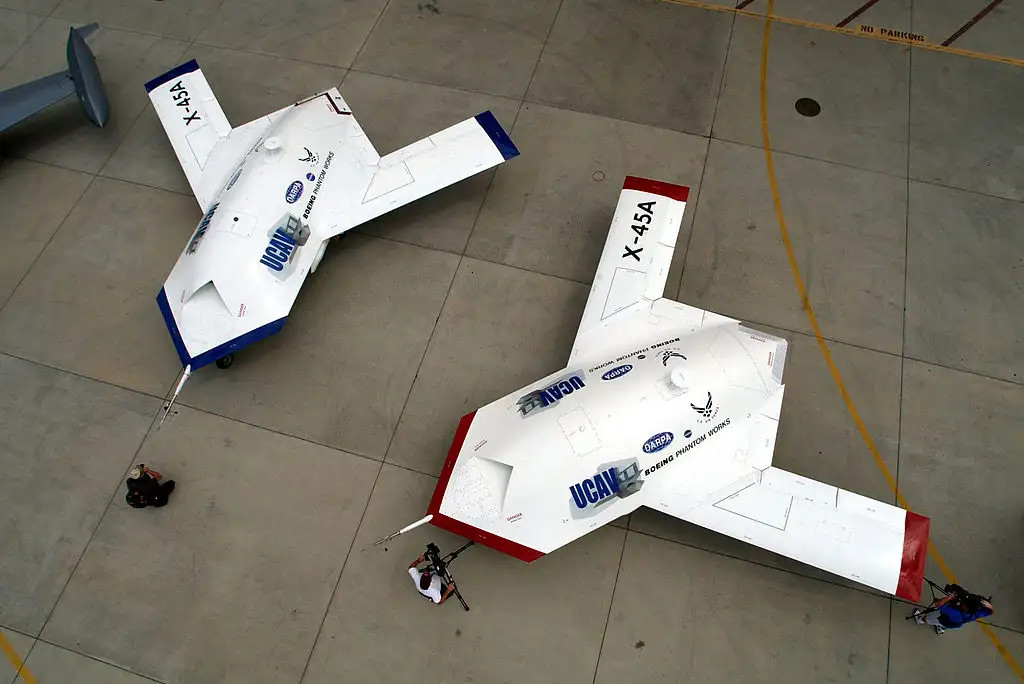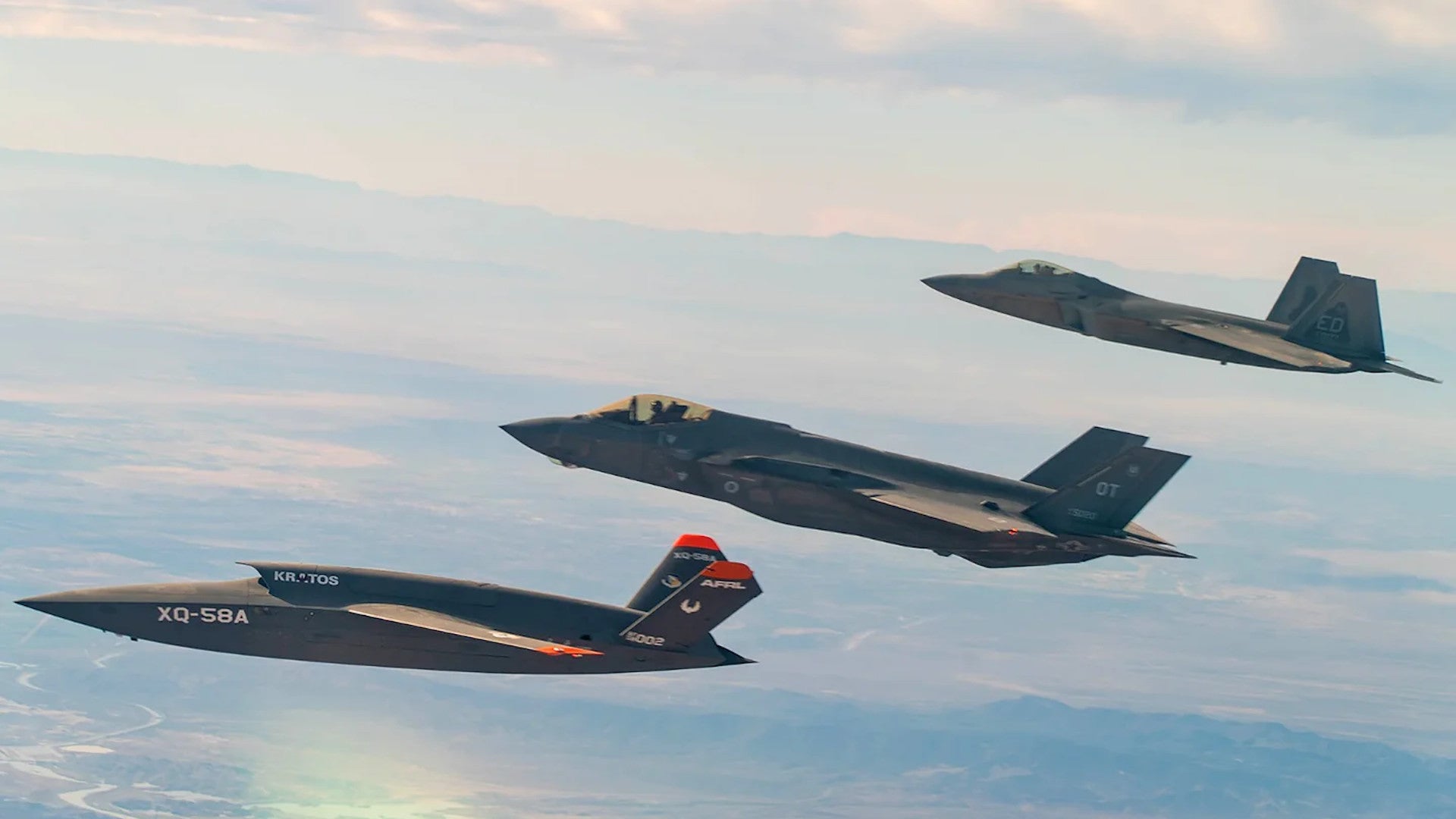Secretary of the Air Force Frank Kendall says he wants to get two new classified unmanned aircraft programs into the defense budget for the 2023 fiscal year. Kendall did not offer specific details about either of these projects but said they both would involve designs intended to work together with manned fighter jets and bombers.
Kendall talked briefly about these unmanned aircraft programs and his desire to get them into the fiscal year 2023 budget in an interview with Politico on the sidelines of the Reagan National Defense Forum. This event, which a number of senior U.S. military officials spoke at or otherwise attended, took place at the Reagan Library in California this past weekend.

“I’ve got two that I’m going to have in the ’23 budget in some form,” Kendall told Politico. “They’re both unmanned air combat vehicles, unmanned platforms that are designed to work in conjunction with fighter aircraft like [the one under development under Next Generation Air Dominance program] or F-22 or the F-35. On the other hand, they work in conjunction with bombers like the B-21.”
“These will be acknowledged classified programs, but I am going to try to get them started in ‘23,” the Air Force Secretary continued. The 2023 fiscal year will begin on Oct. 1, 2022. Typically, the Pentagon releases a public version of its budget proposal for the upcoming fiscal year in the spring as part of a larger proposed spending plan from the incumbent presidential administration.
While Kendall did not elaborate on what these programs might entail, his basic description of what the drones in question would be expected to do sounds very much in line with the concept of a “loyal wingman.” This refers to unmanned aircraft that are designed to operate networked together with manned platforms.
It seems very likely that Skyborg, or an outgrowth of it, is one of the programs that Kendall was referring to. Skyborg is focused on developing an artificial intelligence-driven “computer brain” and a suite of associated systems that will be able to fly semi-autonomous loyal wingman-type drones and could also take control of future fully autonomous unmanned combat air vehicles (UCAV). The Air Force is now flight testing Skyborg components and has hired Boeing, General Atomics, and Kratos to build drones to carry the full array of systems. The service has said in the past that it hopes to have a loyal wingman-type unmanned aircraft using this technology in service by 2023.

The Air Force Research Laboratory (AFRL), which is managing Skyborg together with the Air Force Life Cycle Management Center (AFLCMC), has also been exploring the Defender concept put forward by General Atomics. That company’s Defender proposal envisions an unmanned aircraft derived from its somewhat stealthy Avenger design that would act as a loyal wingman focused on the defense of increasingly vulnerable, but still critical, support aircraft, such as aerial refueling tankers. The Air Force has already begun conducting tests of how tankers, in particular, would work together with loyal wingman-type drones.

The Air Force’s Next Generation Air Dominance (NGAD) program will include manned and unmanned components as well, which are designed to work together. The service has previously disclosed that at least one NGAD demonstrator of some kind has been flying already. There has been separate talk in the past about using future B-21 bombers networked together with unmanned aircraft in an air-to-air combat role.

Beyond all this, the Air Force is publicly working on a number of other advanced unmanned aircraft projects, such as MQ-Next that is looking for a stealthier successor to the MQ-9 Reaper, and other tangential efforts, including the development of advanced communication gateway nodes, that could, at least in part, inform future loyal wingman designs. In recent years, the Air Force has utilized Kratos’ stealthy XQ-58A Valkyrie design, in particular, to support various advanced unmanned testing. These are also just the programs and initiatives we know about and it is well established that there is other relevant work being done in the classified realm.

In addition, there’s the possibility that the two planned programs Kendall mentioned could include a higher-end, fully autonomous unmanned combat air vehicle (UCAV) that could function as a loyal wingman, but also operate more independently of manned platforms. For instance, as already noted, the Air Force has discussed using systems developed as part of Skyborg to support future UCAV development.
Regardless, it would not be at all surprising for the Air Force to want to transition any number of these projects, secret or otherwise, into one or more formal programs of record with the hope of fielding actual operational capabilities in the near term. This is all in line with Kendall, along with other senior officials from the service, becoming increasingly outspoken about the need to acquire new types of advanced manned and unmanned aircraft to maintain America’s military edge against potential adversaries, particularly China, and to a lesser extent Russia. “If it doesn’t threaten China, why are we doing it?” Kendall said during a panel discussion at the Reagan National Defense Forum.
At the same time, Kendall’s remark that he intends “to try to get” these two new programs into the fiscal year 2023 budget indicates that he is not entirely convinced that this will happen. That, in turn, brings up long-standing questions about why the Air Force continues to lag behind in actually fielding advanced stealthy semi-autonomous and fully autonomous unmanned aircraft, despite decades of known work developing the necessary technology to do so.
The War Zone has highlighted this troubling reality in great detail, including the history of UCAV development and how it all suddenly disappeared when it was proving to be what some would claim the most disruptive air combat technology since the jet engine. What Kendall is talking about now could reflect the possibility that more substantive work in this regard has been going on in the classified realm, which is more or less a given, but doing small-scale secret testing does not provide the critical mass needed to actually impact the trajectory of a major conflict. Kendall’s desire to “get them started” in the 2023 fiscal year budget would seem to suggest that he is not simply outlining a plan to publicly acknowledge some collection of existing secret efforts that are actively working toward producing operational capabilities.

Of course, he did say that “the existence of the programs will be disclosed formally in the budget request, which will go to Congress early next year, but the details will be secret,” according to Politico. All told, it remains to be seen if Kendall will be successful in getting these new publicly acknowledged advanced unmanned aircraft programs into his service’s next budget proposal and, if he does, what details about them and their relationship to existing or past projects might be disclosed at that point.
No matter what, if the programs Kendall mentioned to Politico, or similar initiatives, don’t make it into the 2023 Fiscal Year budget request, it will be hard not to see how America’s near-peer adversaries, such as China and Russia, are the ones actually moving ahead openly on multiple fronts in this space.
Contact the author: joe@thedrive.com
